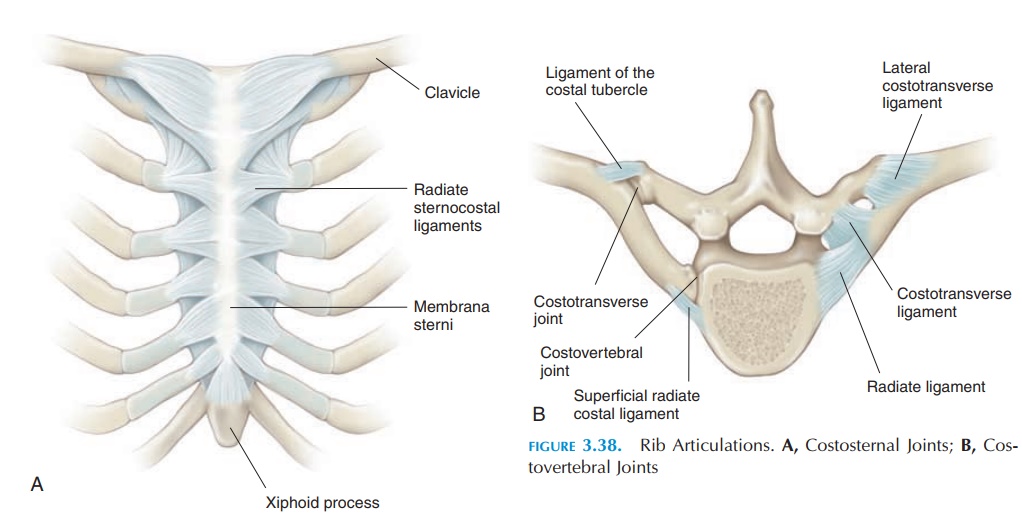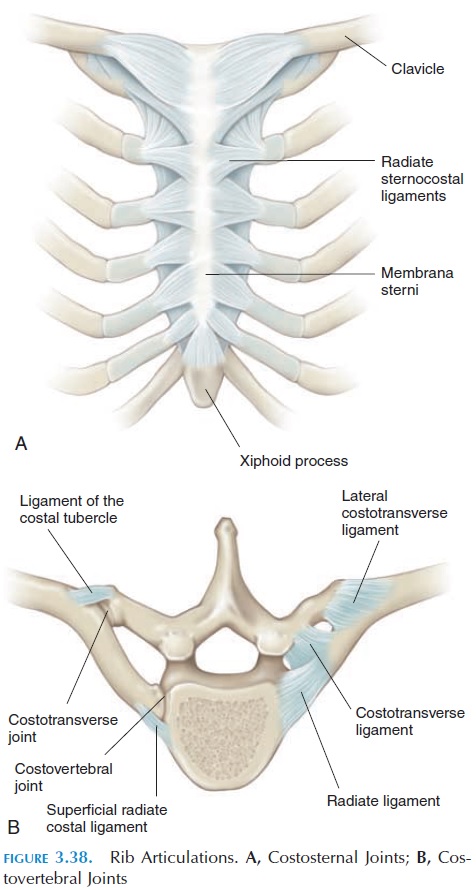Chapter: The Massage Connection ANATOMY AND PHYSIOLOGY : Skeletal System and Joints
RIB Cage Articulations

RIB CAGE ARTICULATIONS
Articulating Surface, Type of Joints,and Ligaments
The ends of the true ribs (1–7) join the costal cartilage anteriorly at costochondral (sternocostal) joints.
The true ribs are attached to the sternum by individual cartilages; the false ribs (8–10) have a common junc-tion with the sternum. The first rib is joined to the manubrium by a cartilaginous joint and movement is limited. The second rib articulates with a demifacet on the manubrium and body through a synovial plane joint. The cartilages of the third to seventh ribs have small synovial joints that attach to the body of the ster-num. The cartilages of the adjacent false ribs are at-tached to each other at the interchondral joints.
The ribs and the vertebrae articulate at two locations (see Figure 3.38). The head of each rib articulates with the bodies of two adjacent vertebrae at the costal demi-facet present at the junction of the body and posterior arch of the thoracic vertebrae. The bones are held in place by the radiate ligament.A cartilage disk sepa-rates the two articulating surfaces. This synovial joint is known as the costovertebral joint.The rib tubercle ar-ticulates with the corresponding vertebral transverse process at the synovial joint (costotransverse joint). Costotransverse ligaments hold this joint in place.

The joints between the manubrium and body or sternum—sternomanubrial joint—and the body of sternum and xiphoid process—xiphisternal joint— allow little movement.
Movements, Range of Motion, and Muscles
Each rib has its own range and direction of move-ment that differs a little from the others. The first ribs, with their firm attachment to the manubrium, move forward and upward as a unit. The movement occurs at the head of the ribs, with resultant eleva-tion of the manubrium. The other ribs have a typical bucket-handle movement . The false ribs, in addition to elevation of the anterior end, have a caliperlike movement in which the anterior ends are moved laterally and posteriorly to increase the transverse diameter of the thoracic cage.
The sidebending and rotation of the thoracic spine is limited by the rib cage and movement possible at the costovertebral, costotransverse, and costochon-dral joints. The rib on the side to which the thoracic vertebra rotates becomes more convex while the op-posite rib becomes flattened posteriorly.
Related Topics